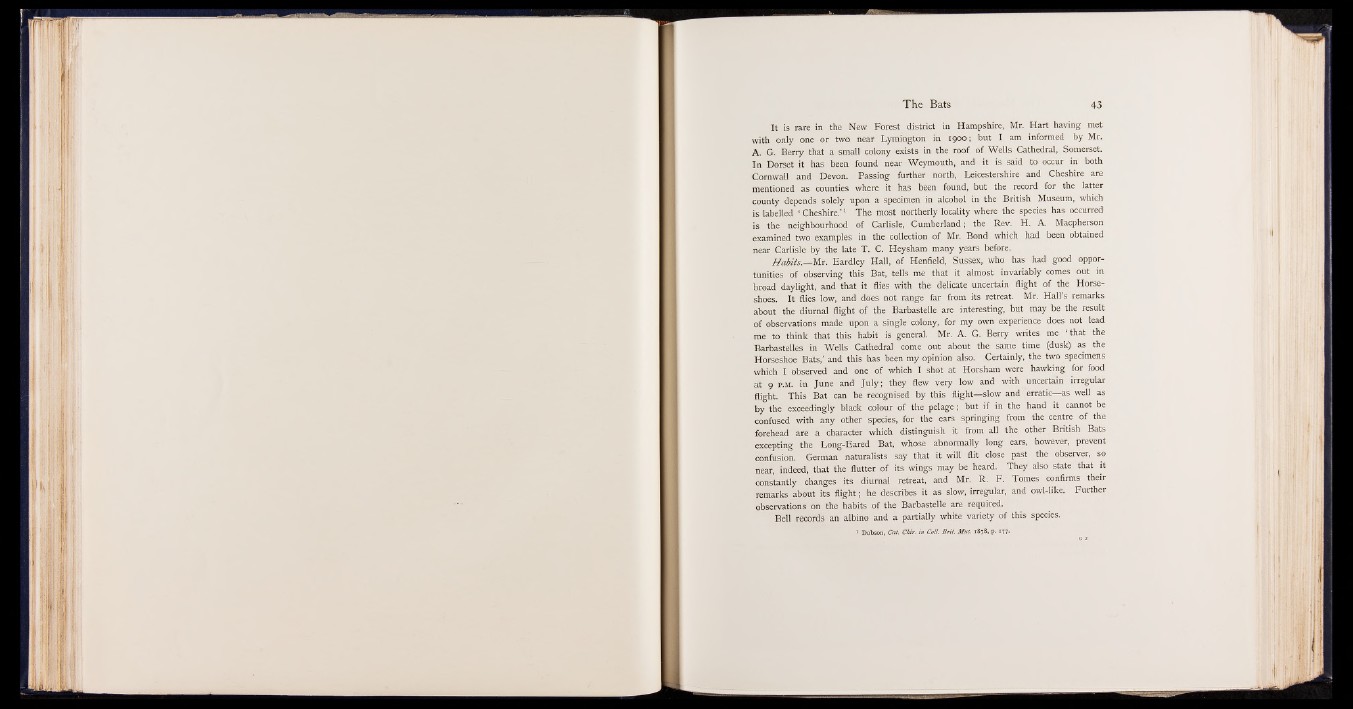
It is rare in the New Forest district in Hampshire, Mr. Hart having met
with only one or two near Lymington in 1900; but I am informed by Mr.
A. G. Berry that a small colony exists in the roof of Wells Cathedral, Somerset.
In Dorset it has been found near Weymouth, and it is said to occur in both
Cornwall and Devon. Passing further north, Leicestershire and Cheshire are
mentioned as counties where it has been found, but the record for the latter
county depends solely upon a specimen in alcohol in the British Museum, which
is labelled ‘ Cheshire.’ 1 The most northerly locality where the species has occurred
is the neighbourhood of Carlisle, Cumberland; the Rev. H. A. Macpherson
examined two examples in the collection of Mr. Bond which had been obtained
near Carlisle by the late T. C. Heysham many years before.
Habits.— Mr. Eardley Hall, of Henfield, Sussex, who has had good opportunities
of observing this Bat, tells me that it almost invariably comes out in
broad daylight, and that it flies with the delicate uncertain flight of the Horseshoes.
It flies low, and does not range far from its retreat. Mr. Hall’s remarks
about the diurnal flight of the Barbastelle are interesting, but may be the result
of observations made upon a single colony, for my own experience does not lead
me to think that this habit is general. Mr. A. G. Berry writes me ‘ that the
Barbastelles in Wells Cathedral come out about the same time (dusk) as the
Horseshoe Bats,’ and this has been my opinion also. Certainly, the two specimens
which I observed and one of which I shot at Horsham were hawking for food
at 9 p .m . in June and July; they flew very low and with uncertain irregular
flight. This Bat can be recognised by this flight— slow and erratic— as well as
by the exceedingly black colour of the pelage; but if in the hand it cannot be
confused with any other species, for the ears springing from the centre of the
forehead are a character which distinguish it from all the, other British Bats
excepting the Long-Eared Bat, whose abnormally long ears, however, prevent
confusion. German naturalists say that it will flit close past the observer, so
near, indeed, that the flutter of its wings may be heard. They also state that it | ,
constantly changes its diurnal retreat, and Mr. R. F.~ Tomes confirms their
remarks about its flight; he describes it as slow, irregular, and owl-like. Further
observations on the habits of the Barbastelle are required.
Bell records an albino and a partially white variety of this species.
1 Dobson, Cat. Chir. in Coll. B rit. Mus. 1878, p. 177-